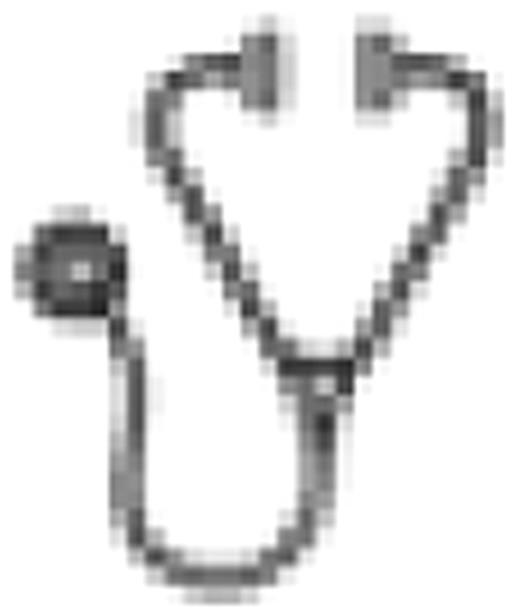Abstract
Abstract 2245
High dose chemo/radiotherapy followed by autologous hematopoietic stem cell (HSC) transplantation (HSCT) is indicated in several pediatric malignant disorders such as neuroblastoma and relapsed Hodgkin's disease. Ideally, 2–5 × 106 CD34+ cells/kg should be infused during autologous peripheral blood (PB) HSCT to support timely and durable engraftment and improve transplant outcomes. In patients who have received repetitive cycles of intensive chemotherapy, this target is not always achieved with standard mobilization regimens. Plerixafor, a novel CXCR4 antagonist, when combined with granulocyte colony-stimulating factor (G-CSF), can safely and predictably mobilize adequate numbers of CD34+ HSC to support transplantation in adult patients with myeloma and lymphoma. We report on the safety and efficacy of PB HSC mobilization with plerixafor + G-CSF in pediatric patients with cancer.
This is a retrospective analysis of all children with various malignant disorders who were enrolled in the US plerixafor compassionate use program (CUP; NCT00291811). Patients who had previously failed HSC mobilization (defined as the inability to collect ≥2 x106 CD34+ cells/kg or achieve an adequate PB CD34+ cell count, typically ≥10 CD34+ cells/μl) with growth factor +/− chemotherapy were treated with plerixafor + G-CSF. The goal was to collect ≥2 × 106 CD34+ cells/kg for autologous HSCT. G-CSF (10μg/kg SC) was administered daily for 5 days. Plerixafor (0.24 mg/kg SC) was given in the evening on Day 4, ~11 hours prior to apheresis. Plerixafor, G-CSF and apheresis were repeated daily until ≥2 × 106 CD34+ cells/kg had been collected.
A total of 16 patients with non Hodgkin's lymphoma (3), Hodgkin's disease (1), CNS tumors (4), Ewing's sarcoma (4), neuroblastoma (2), osteogenic sarcoma (1) and desmoplastic small cell tumor (1) underwent the procedure. The median age was 14 years and 7 (44%) patients were male. In previous mobilization attempts, 5 patients failed to collect the minimum transplantable cell dose with a median yield of 0.44 x106 (range: 0.17–2.2 × 106) CD34+ cells/kg. Apheresis was never attempted in11 patients due to low PB CD34+ cell levels; median cells/μl was 1.0 (range, 0.01–12) in 9 patients with available data. Initial mobilization regimens included growth factor alone in 6 patients and growth factor + chemotherapy in 9 patients (data unavailable for 1 patient). When re-challenged for mobilization with plerixafor + G-CSF, 14 (88%) patients successfully collected ≥2 × 106 CD34+ cells/kg; this included all 4 (100%) patients with lymphoma and 10 (83%) patients with solid tumors. The median time to collect the target cell dose was 1.5 days (range 1–5 days). The median CD34+ cell yield from all patients was 3.5 × 106 cells/kg (range 0.96 – 9.80 × 106); patients with lymphoma and solid tumors collected a median of 7.2 (range 3.2 – 7.9) × 106 and 3.3 (range 0.96 –9.8) × 106 CD34+ cells/kg, respectively. Eleven (69%) patients proceeded to transplant including all 4 (100%) patients with lymphoma and 7 (58%) patients with solid tumors. One patient with neuroblastoma received a tandem transplant. The median infused cell dose was 4.18 × 106 CD34+ cells/kg (range 1.7 – 7.6 × 106). The median time to neutrophil and platelet engraftment was 14 and 33 days, respectively. Plerixafor-related adverse events were mostly mild, and observed in 5 (31%) patients. They included administration site reactions (4), vomiting (2), nausea (1) and oral paraesthesia (1). No patient experienced a serious adverse event.
Treatment with plerixafor + G-CSF safely and effectively mobilized HSC in the majority of pediatric patients with malignant disorders after failure of standard mobilization with growth factor ± chemotherapy. Successful stem cell mobilization allowed consideration of autologous HSCT when indicated. Mobilization with plerixafor was safe and resulted in prompt engraftment. Many of these patients could not have proceeded to transplant without this intervention.
Outcomes of plerixafor+ G-CSF remobilization in children
| No. of Patients | 16 |
| Median age (range) | 14 (8–18) |
| Gender, male (%) | 7 (44) |
| Median CD34+ cells/kg × 106 collected (range) | 3.5 (0.96–9.80) |
| No. of patients collecting ≥2 × 106 CD34+ cells/kg (%) | 14 (88) |
| No. of patients proceeding to transplant (%) | 11 (69) |
| Median days to neutrophil engraftment (range) | 14 (9–23) |
| Median days to platelet engraftment (range) | 33 (12–86) |
| No. of Patients | 16 |
| Median age (range) | 14 (8–18) |
| Gender, male (%) | 7 (44) |
| Median CD34+ cells/kg × 106 collected (range) | 3.5 (0.96–9.80) |
| No. of patients collecting ≥2 × 106 CD34+ cells/kg (%) | 14 (88) |
| No. of patients proceeding to transplant (%) | 11 (69) |
| Median days to neutrophil engraftment (range) | 14 (9–23) |
| Median days to platelet engraftment (range) | 33 (12–86) |
Off Label Use: Plerixafor (Mozobil®), a hematopoietic stem cell mobilizer, is approved by the US FDA in combination with granulocyte-colony stimulating factor (G-CSF) to mobilize hematopoietic stem cells to the peripheral blood for collection and subsequent autologous transplantation in patients with non-Hodgkin's lymphoma and multiple myeloma. McCarty: Genzyme, Amgen: Honoraria, Research Funding. Angell: Genzyme Corporation: Employment, Equity Ownership. Huebner: Genzyme Corporation: Employment, Equity Ownership.

This icon denotes an abstract that is clinically relevant.
Author notes
Asterisk with author names denotes non-ASH members.

This feature is available to Subscribers Only
Sign In or Create an Account Close Modal